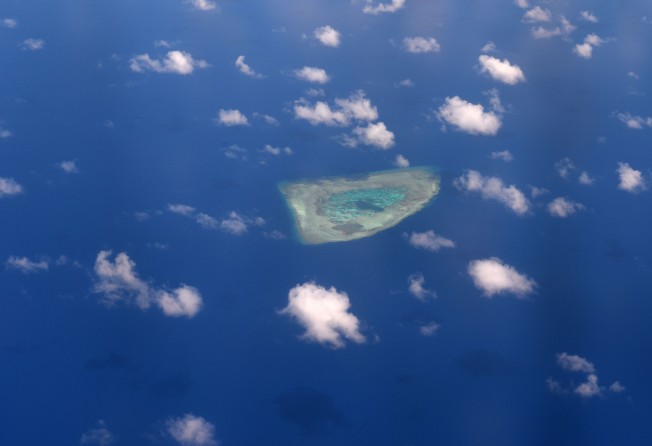
As US-China rivalry hots up, what does the future hold for Southeast Asian security and the South China Sea?
- No one should expect the sovereignty disputes over rocks and reefs to be resolved any time soon. But claimants including China and the Philippines may reach compromises and agree to joint development deals

I am no Nostradamus. But after some 45 years of analysing South China Sea issues, I have drawn some conclusions about what will – and will not – happen in the region in the foreseeable future.
First some context. In the mid-1970s, when I first began following the issues, they were relatively isolated disputes over ownership of specks on the atlas. They were not major security concerns for either the claimants or outside maritime powers like the United States.
However, over the ensuing decades, nations became more aware of the fisheries and potential oil reserves in the South China Sea, and of the possibility that these specks could qualify to have 200-nautical-mile exclusive economic zones around them. As the claimants extended their resource jurisdiction 200 nautical miles, or even more, China revived its historical claim to the waters, the “nine-dash line”.
This is when the US got involved because it feared China would limit freedom of navigation in the sweeping area it claimed. Unfortunately, The Hague did not mitigate the dispute when it rejected China’s claim to the waters and ruled that the specks in question could not have exclusive economic zones around them.
Beijing refused to recognise the ruling in the case brought by Manila. Despite warnings from many, myself included, the South China Sea issues became intertwined with a power struggle between China and the US. The outcome of this struggle will be a major factor in the region’s future. In this context, here are the things that are unlikely to happen.
First, China is unlikely to explicitly drop the nine-dash line. Since ordinary Chinese believe Beijing’s assertion of sovereignty over the South China Sea “since ancient times”, relinquishing the claim would mean delegitimising the government and the Communist Party. However, Beijing could implicitly recognise The Hague’s ruling by acknowledging other claimants’ ownership and accepting a minority share in joint developments.
Second, sovereignty disputes over rocks and reefs in the South China Sea are unlikely to be resolved. No government could back down without losing legitimacy. However, all the claims have legal weaknesses. Eventually, mutual demilitarisation may be possible.
Third, Asean and China are unlikely to agree to a legally binding code of conduct to govern regional behaviour. Irresolvable issues here include whether the code should cover the Paracel Islands and the code’s own legal status. Is it an international treaty, an agreement or a set of guidelines, and how is it to be enforced? While these issues could be finessed by using ambiguous language, differences in interpretation would remain and the system would not be robust.
The best that can be hoped for is a set of voluntary guidelines, with international opprobrium as the only means of enforcement.
Fourth, the US will not stop meddling in relations between China and the Association of Southeast Asian Nations. Even if the US reduces its military presence in the South China Sea (which is highly unlikely), its competition with China will continue. The US has simply invested too much – in terms of blood, treasure and credibility – to leave the region all together. Moreover, its meddling in the negotiations for the code of conduct is integral to its attempt to check China’s regional dominance.
Fifth, the US will not cease provocative reconnaissance missions targeting China’s coastal military assets (including its nuclear-powered, ballistic-missile submarines based on Hainan Island). The US maintains a technological advantage over China in this regard, and it will not give up this advantage until and unless China achieves technological parity.
Sixth, China and the Southeast Asian countries will not bring their claims into conformity with the UN Convention on the Law of the Sea. Although all these countries, except Cambodia, have ratified the convention, they have claims that do not conform with the law, and national security reasons for maintaining these claims.
So what is likely to happen?
First, the US and China will continue to militarise Southeast Asia and the South China Sea. As China expands its naval capabilities and US military probes increase in frequency and intensity, international incidents will also increase in frequency and severity. As a result, Southeast Asian security and stability will decrease.
Second, Southeast Asian countries will continue to be sidelined in regional security affairs. The contest for dominance between China and the US has exposed the reality that, in a clash between major powers, Asean is not sufficiently politically and militarily unified to be central to the region’s security.
Third, Southeast Asian countries will be under increasing pressure to choose between the US and China regarding their activities in the South China Sea.
Fourth, compromises will be reached between China and the other claimants regarding petroleum exploration and development in the disputed areas. A proposal by China and the Philippines to look into joint oil exploration – if agreed and implemented – may pave the way for other plans. But disputes and incidents over fisheries will continue as fish stocks decline.
Finally, more analysts will explore the panoply of South China Sea issues and propose unrealistic panaceas. Some will recommend unilateral action by the US that could worsen the situation and lead to kinetic conflict. This is the safest prediction of all.
Mark J. Valencia is an adjunct senior scholar at the National Institute for South China Sea Studies, Haikou, China